Procedure helps manage hypermature cataract combined with pseudoexfoliation
The combination of these conditions is often difficult to manage.
March 2001
The combination of hypermature cataract and pseudoexfoliation bodes potential difficulty for the cataract surgeon. First, it is difficult to perform a capsulorrhexis because of poor visualization, and, second, there is difficulty due to potential zonular compromise because of pseudoexfoliation.
I found that I could handle these patients in the most controlled manner by using indocyanine green to stain the capsule prior to capsulorrhexis and then elevating the cataract from the capsular bag to perform cataract extraction in the anterior chamber away from the potentially weakened zonules, protecting the corneal endothelium at the same time.
Procedure
The procedure is as follows: a 1-mm paracentesis is performed, through which air is instilled into the anterior chamber. A drop of viscoelastic over the wound prevents air from escaping. Indocyanine green is injected into the eye under the air bubble. Then, the air is exchanged for viscoelastic, and the capsulorrhexis is begun using a blunt cystotome, fashioning a triangular flap. Then, the rhexis is completed using a capsulorrhexis forceps.
Hydrocortical cleavage is performed until the lens is tilted out of the bag. Viscoelastic is injected into the capsular bag under the tilted edge of the lens, and the lens is carouseled into the anterior chamber. A layer of viscoelastic is instilled under the superior edge of the lens and over the anterior surface of the lens. Then, the viscoelastic-bathed cataract is chopped in the anterior chamber using a specially designed chopper.
Phaco
Additional viscoelastic is placed over the chopped cataract, the cataract is phacoemulsified and a lens is implanted.
This technique has allowed me to turn a potentially hazardous case into a much safer one for the patient.
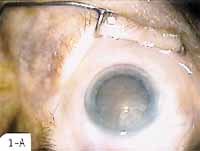 |
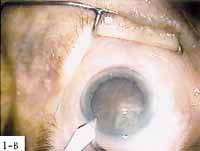 |
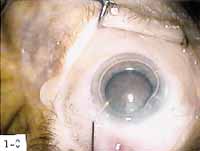 |
| Hypermature cataract and
pseudoexfoliation are difficult to manage. |
A 1-mm paracentesis is performed
through which air is instilled into the anterior chamber. |
|
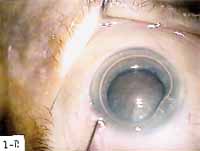 |
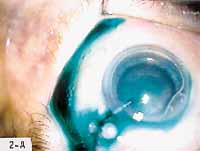 |
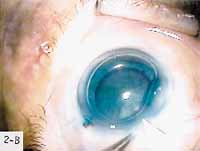 |
| Instilling a drop of viscoelastic over
the wound ensures prevention of air escaping. |
Indocyaine green is injected into the
eye under the air bubble. |
|
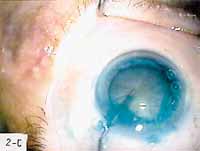 |
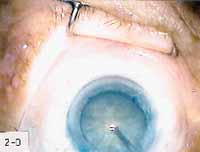 |
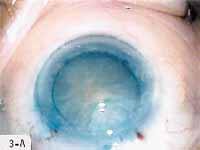 |
| Air is exchanged for
viscoelastic. |
The capsulorrhexis is begun using a
blunt cystotome, fashioning a triangular flap. |
|
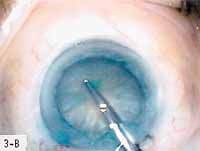 |
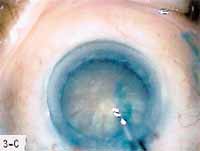 |
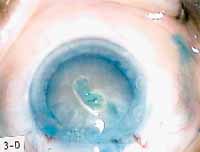 |
| Then, the rhexis is completed using a
capsulorrhexis forceps. |
||
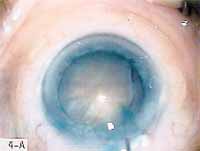 |
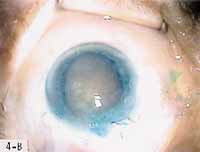 |
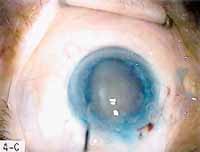 |
| Hydrocortical cleavage is performed
until the lens is tilted out of the bag. |
Viscoelastic is injected into the
capsular bag under the tilted edge of the lens. |
|
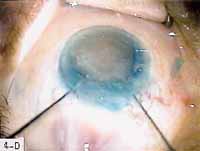 |
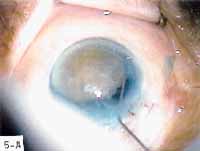 |
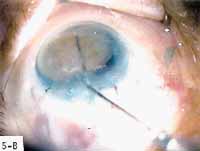 |
| The lens is carouseled into the
anterior chamber. |
A layer of viscoelastic is instilled
under the superior edge of the lens and over the anterior surface of the
lens. |
|
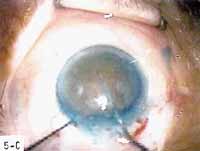 |
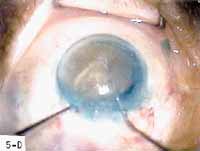 |
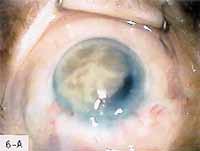 |
| The viscoelastic-bathed cataract is
chopped in the anterior chamber using a specially designed
chopper. |
||
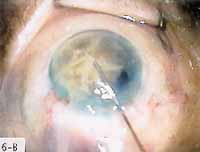 |
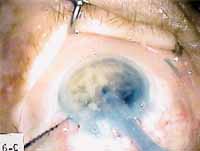 |
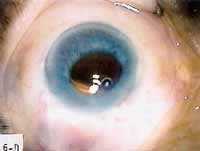 |
| Additional viscoelastic is placed over the chopped cataract. | The cataract is phacoemulsified. | A lens is implanted. |
